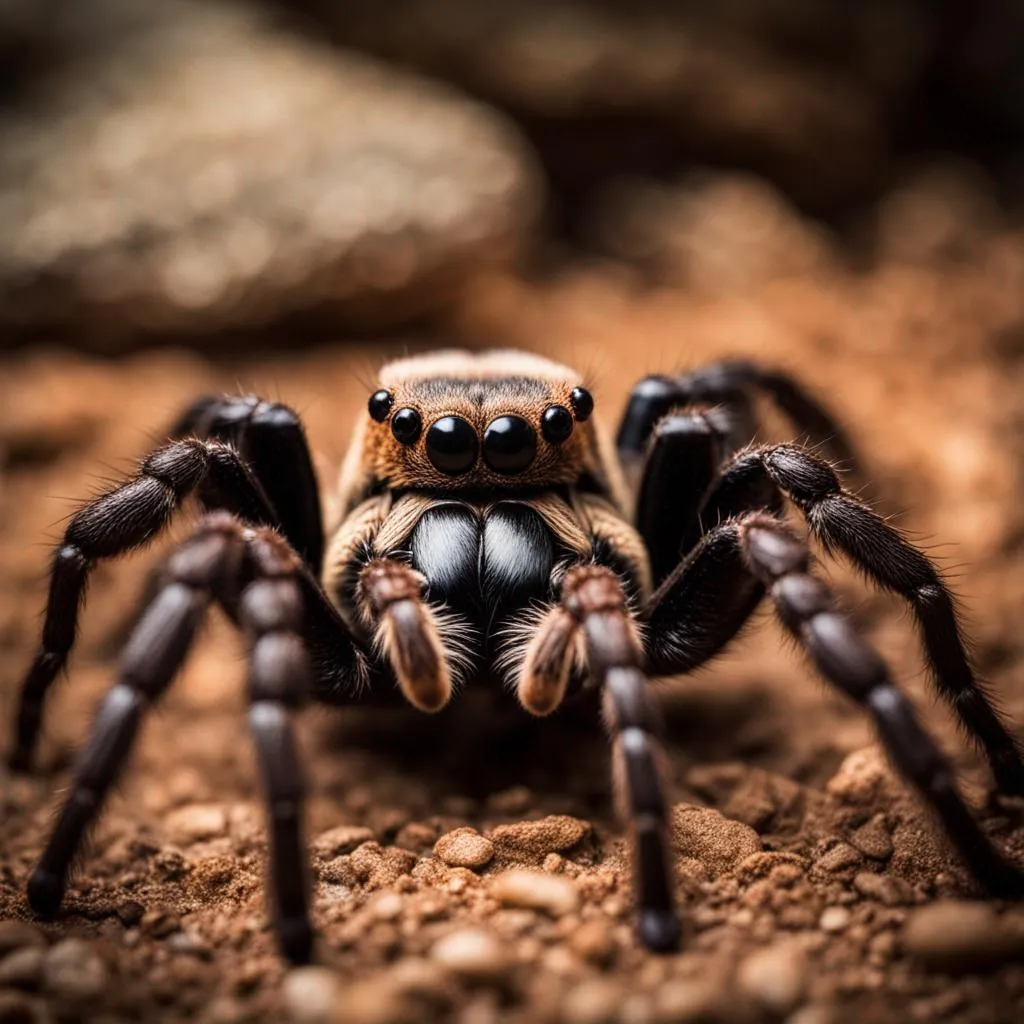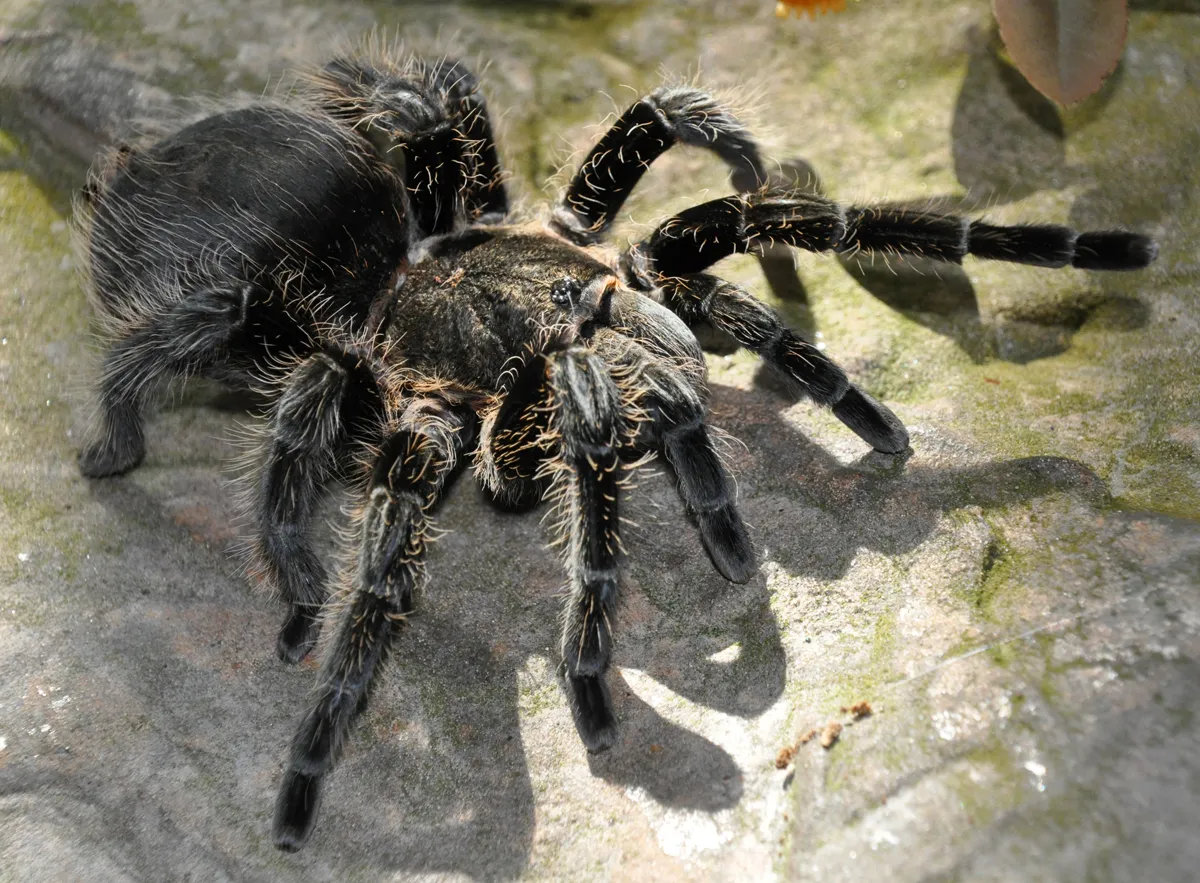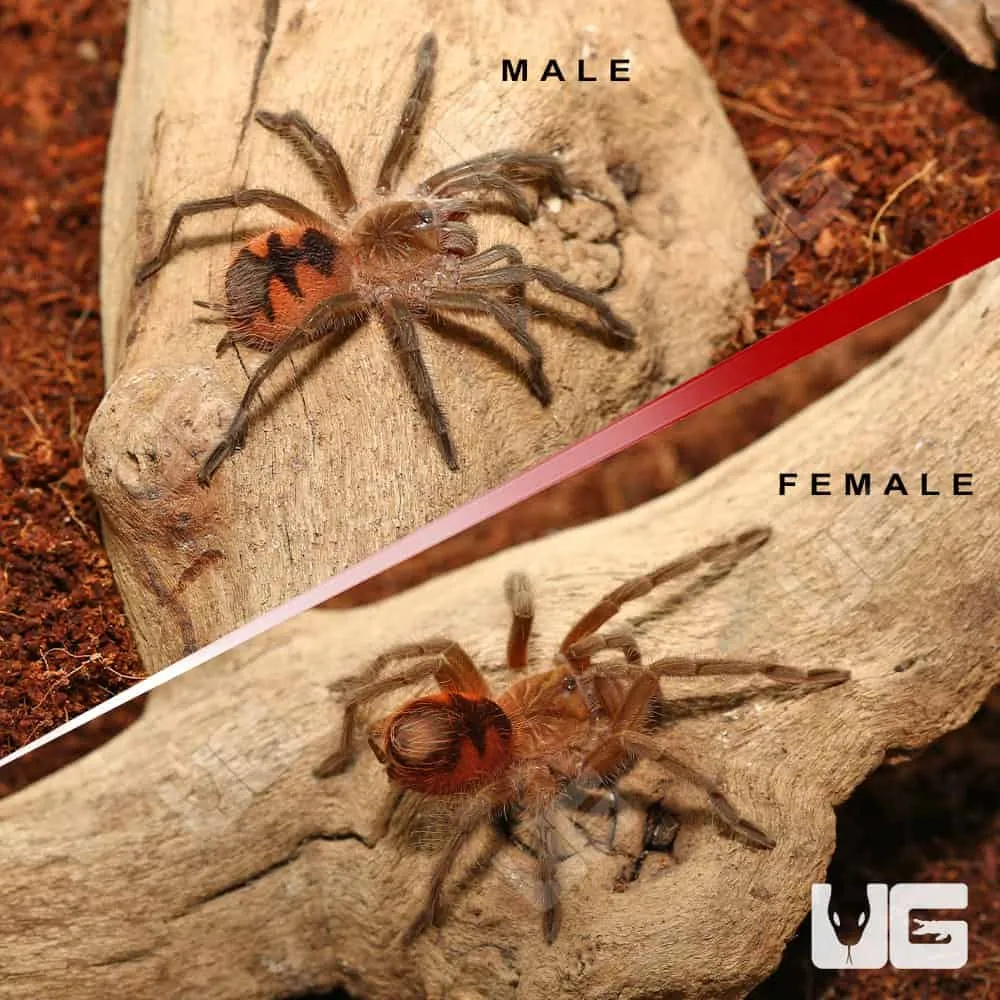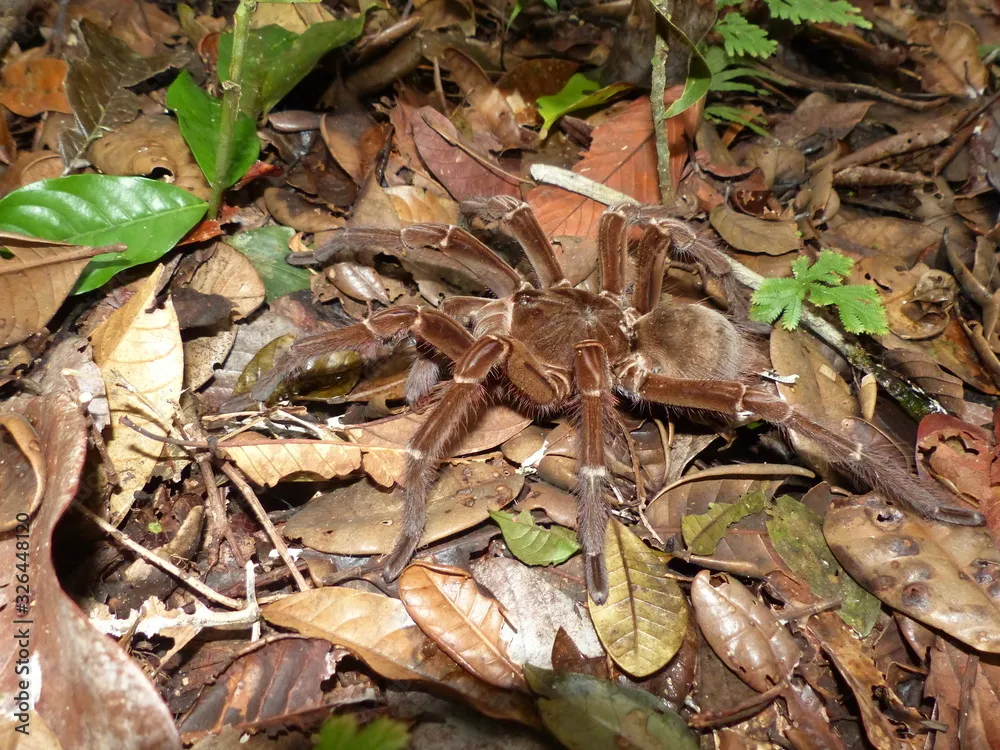What is the Goliath Birdeater Tarantula
The Goliath Birdeater tarantula (Theraphosa blondi) is the world’s largest spider, captivating the interest of arachnid enthusiasts and the general public alike. Native to the rainforests of northern South America, this impressive creature is a sight to behold, with a leg span that can reach up to 12 inches. Despite its intimidating size, the Goliath Birdeater is relatively docile and often kept as a pet by experienced tarantula keepers. This article delves into the amazing facts surrounding this fascinating species, providing insights into its biology, behavior, and the wonders it presents.
Appearance and Size
The Goliath Birdeater truly earns its name due to its massive size. The females are generally larger than the males and can weigh over 6 ounces. Their bodies are covered in reddish-brown hairs, providing camouflage within their forest habitat. The spiders have large fangs, which they use to inject venom into their prey. Although they are the largest spiders by mass, their leg span is comparable to some other large tarantula species. The sheer size of the Goliath Birdeater makes it a truly unique and impressive specimen in the animal kingdom. Seeing one in person is an unforgettable experience, underscoring the power of natural selection in creating such remarkable creatures.
Habitat and Distribution

These colossal spiders are primarily found in the rainforests of northern South America. Their distribution includes countries such as Brazil, Venezuela, Guyana, Suriname, and French Guiana. They prefer to live in burrows, typically found in humid, swampy areas. The high humidity and abundance of food in these environments create an ideal habitat for the Goliath Birdeater to thrive. They are terrestrial spiders, meaning they spend most of their time on the ground. Their burrows provide shelter from predators and the harsh elements, allowing them to ambush their prey. These habitats are crucial to their survival, highlighting the importance of conservation efforts to protect their natural environment.
Unique Characteristics and Behaviors
The Goliath Birdeater exhibits a range of fascinating behaviors. One of its most unique defense mechanisms is the ability to flick urticating hairs from its abdomen. These hairs, when disturbed, can cause intense irritation to potential predators and humans alike. They are nocturnal hunters, ambushing their prey under the cover of darkness. Their diet primarily consists of insects, but they are also known to consume small vertebrates, such as lizards, frogs, and even, on rare occasions, small birds, which gives them their name. Additionally, these spiders are relatively long-lived, with females often living for over a decade, and they have a fascinating molting process where they shed their exoskeleton to grow.
Top 5 Amazing Facts About the Goliath Birdeater Tarantula
Fact 1 Size and Weight

The sheer size of the Goliath Birdeater is arguably its most impressive feature. These spiders can have a leg span of up to 12 inches, making them the largest spiders in the world by mass. Adult females can weigh over 6 ounces, rivaling the weight of some small mammals. Imagine a spider the size of a dinner plate. This immense size allows them to overpower and consume larger prey items. The evolution of their size is a remarkable adaptation to their environment, allowing them to thrive as apex predators within their ecosystem. The size alone makes it a captivating subject for both scientists and spider enthusiasts.
Fact 2 Diet
While insects make up the majority of the Goliath Birdeater’s diet, they are opportunistic predators and will consume a wide variety of prey. They are known to hunt and eat small vertebrates, including lizards, frogs, and even small snakes. Although they are called “birdeaters,” birds are only a very occasional part of their diet. Their powerful fangs and venom help them subdue their prey. They patiently wait in their burrows or ambush positions, and when an unsuspecting meal comes close, they launch a swift attack. Their diverse diet demonstrates their adaptability and their role as a significant predator in their ecosystem.
Fact 3 Defense Mechanisms
Beyond their size and venom, Goliath Birdeaters possess a unique defense mechanism they use when threatened. They have urticating hairs on their abdomen that they can flick off to deter predators. These hairs, when they come into contact with skin or mucous membranes, cause intense itching and irritation. This defense mechanism can be incredibly effective against potential threats, giving them a significant advantage in the wild. They also have large fangs and can deliver a painful bite if they feel threatened. The combination of these defensive strategies helps them survive in a dangerous environment.
Fact 4 Lifespan

The Goliath Birdeater boasts a relatively long lifespan, particularly for female spiders. Females can live for 10 to 25 years in captivity, while males have a shorter lifespan, typically 3 to 6 years. This longevity allows them to reproduce multiple times and contributes to the stability of their population. The extended lifespan of the females is a testament to their successful adaptation to their environment. The extended life cycle makes them a rewarding pet for those prepared to care for them over a long period.
Fact 5 Venom and Danger
The Goliath Birdeater’s venom is not considered lethal to humans, but a bite can be painful. The venom contains toxins that cause localized pain, swelling, and muscle cramps. Their large fangs can also cause a significant puncture wound. While a bite is unlikely to be life-threatening, medical attention should be sought if symptoms are severe or if there are signs of an allergic reaction. The greatest danger associated with these spiders comes from their urticating hairs, which can cause significant skin and respiratory irritation. Proper handling and precautions are essential to minimize risks.
Caring for a Goliath Birdeater Tarantula
Choosing a Habitat

Creating a suitable habitat is paramount to the well-being of your Goliath Birdeater. A large terrarium with plenty of floor space is essential, as these spiders are terrestrial. The enclosure should be at least 20 gallons, but ideally larger. The substrate should be a mixture of coconut fiber, peat moss, and sphagnum moss to maintain humidity. Provide a water dish, a hide, and a temperature gradient using a heat lamp or mat. Maintain a temperature between 75-85°F (24-29°C) and a humidity level of 75-85%. Ensure the enclosure is secure to prevent escapes, which are a common concern with this size of spider.
Feeding and Diet
Feeding your Goliath Birdeater requires a varied diet. Crickets, roaches, and other insects are the primary food source. Feed them one to three times a week, depending on the spider’s size and appetite. Avoid overfeeding, as this can lead to health issues. Provide fresh water at all times. Remove any uneaten food to prevent mold or mites. The Goliath Birdeater is an excellent eater, and observing their feeding behavior can be both fascinating and educational. Always ensure that the prey items are appropriately sized for the spider to avoid any potential hazards.
Handling and Safety Precautions
Handling a Goliath Birdeater should be done with extreme caution and is generally not recommended, particularly for beginners. Their size and defensive hairs pose risks. If handling is necessary, do so over a soft surface, such as a bed or a large container, in case the spider falls. Avoid sudden movements and be aware of the potential for them to flick their urticating hairs. Always wash your hands thoroughly after any interaction with the spider or their enclosure. If you develop skin irritation, consult with a medical professional.
Common Health Issues

Like all animals, Goliath Birdeaters can be prone to specific health issues. Common problems include mites, fungal infections, and dehydration. Mites can be introduced through the substrate or live food and can be treated with specific acaricides designed for tarantulas. Fungal infections can occur if the enclosure is too humid or poorly ventilated. Dehydration can be identified by a wrinkled abdomen and lethargy. Providing a clean environment, maintaining appropriate humidity levels, and ensuring access to fresh water are crucial for preventing health issues. Regular observation and prompt action are essential.
Conservation Status and Threats
The Goliath Birdeater is not currently considered endangered, but they are facing increasing threats due to habitat loss and the pet trade. Deforestation and habitat destruction in the Amazon rainforest are reducing their natural habitat. The demand for exotic pets contributes to over-collection from the wild. Supporting conservation efforts that protect rainforests and promoting responsible pet ownership can help ensure the survival of this magnificent species. Raising awareness about the importance of conservation helps protect not just Goliath Birdeaters, but the entire biodiversity of the Amazon.
Conclusion
The Goliath Birdeater is a remarkable creature, showcasing the wonders of biodiversity. From their impressive size and unique defense mechanisms to their complex behaviors, these spiders fascinate anyone who learns about them. Understanding their needs, appreciating their role in the ecosystem, and supporting conservation efforts will help ensure that future generations can marvel at these magnificent creatures. Whether you’re a seasoned arachnid enthusiast or simply curious about the world’s largest spider, the Goliath Birdeater is sure to leave a lasting impression.
